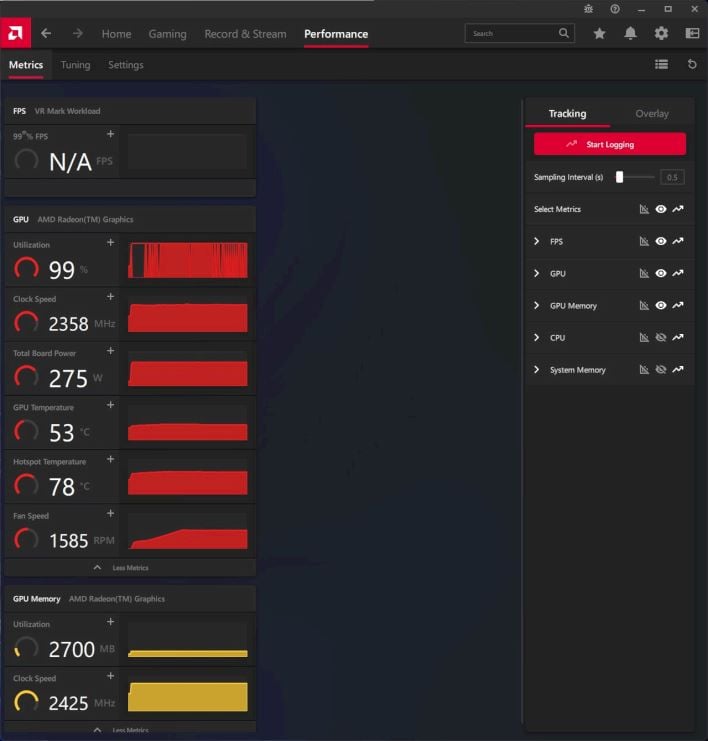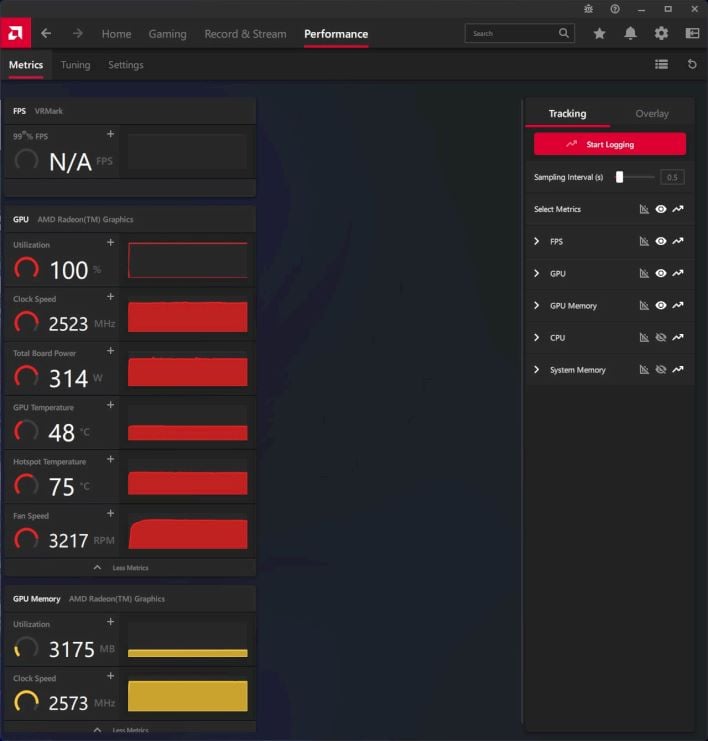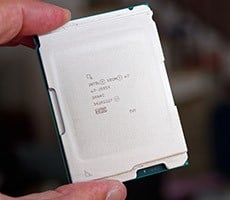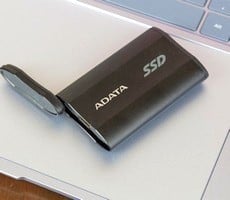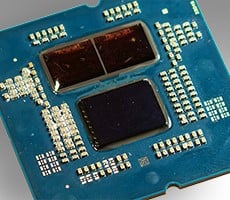Radeon RX 7800 XT And 7700 XT Review: Midrange AMD Gaming GPUs Put To The Test
The tuning options built into AMD's driver suite give users the ability to manually alter frequencies, voltages, fan speeds, and the max power target, using percentages or finer-grained numerical sliders. Users can also opt to use various preset modes or auto-tune a number of characteristics, including GPU and memory frequencies, and the GPU voltage, including under-volting, which can actually increase performance due to reduced thermals and power consumption.
With older Radeons, a single sensor had been used to determine the GPU temperature, and data from that lone sensor was used to control the card's thermal profile. With newer RDNA 2 and RDNA 3 GPUs, like the Navi 32 powering these new cards, AMD has incorporated a network of multiple thermal sensors at strategic locations across the dies. Data gathered from the sensors is used to determine what AMD calls the "Junction Temperature", and it's the Junction Temperature that is used to tune the cards' power and thermal profiles (the Junction Temperature is effectively the hottest part of the GPU die at any given time).
The tuning options built into AMD's Radeon Software suite offer manual controls, along with automatic under-volting and automatic GPU and Memory overclocking. Finding the highest stable memory and GPU clocks, at the lowest voltage possible, while simultaneously increasing the max power target and keeping temperatures low, is what will yield the best overall overclocking results. If you'd rather not mess around though, you could simply hit one of the auto-overclock options, or turn up the max power target.
At its stock settings, we saw the XFX MERC 319 Radeon RX 7800 XT GPU clock typically hovering in the 2,400MHz range while gaming (give or take) with our particular sample, with a junction temperature in the high-70s. With some tweaking we found that we could easily increase the memory clock on our card to 2,588MHz (20.7Gbps, effective), and with an undervolt to 1.125mV, a max frequency set to 2,718MHz, and +15% to the power target, we typically saw a wider-range of real-world game clocks, commonly in the 2,600MHz range. The junction temperature while overclocked peaked in the mid-80°C range with these settings, without modifying the default fan curve. The cooling setup on this card does a nice job keeping temperatures in check without making much noise, but bumping up the fan speed would be advisable to bring that junction temperature down a bit. We were able to hit similar GPU frequencies with the QICK 319 7700 XT, but unfortunately, tweaking the memory speed resulted in a black screen.


While we had the cards overclocked, we re-ran a couple of tests and saw some nice gains with the XFX MERC 319 Radeon RX 7800 XT. Not being able to tweak the memory speed on the 7700 XT, however, resulted in only slight increases in performance, for now at least. There's no reason its memory shouldn't be as overclockable as the 7800 XT.
Total System Power Consumption Tests
We'd also like to cover a couple of final data points regarding power consumption and acoustics before we wrap up. Throughout all of our benchmarking and testing, we monitored noise output and tracked how much power the test system was consuming using a power meter. Our goal was to give you an idea as to how much power each GPU used while idle and also while under a heavy workload. These power numbers were captured during the Luxmark rendering tests and an F1 2022 benchmark run with ray tracing enabled...
In terms of noise output, there's nothing major to report. With their stock fan curves, all three of the new Radeons we tested were nice and quiet or dead silent at idle, and under load, they were barely audible over the CPU, chassis, and PSU fans in our test rig.
AMD Radeon RX 7800 XT & 7700 XT Summary & Conclusion
There’s been plenty of movement in GPU prices as of late, so there’s a lot to parse in regard to this launch. AMD has set the suggested prices for the Radeon RX 7800 XT and RX 7700 XT at $499 and $449, respectively. As is typically the case, custom partner cards will usually command a small premium over suggested pricing. The XFX MERC 319 7800 XT, for example is priced at $539 and the QICK 319 7700 XT at $459.
Generally speaking, the Radeon RX 7700 XT’s price is close enough to the Radeon RX 7800 XT’s that it makes a lot of sense to spring for the higher-end card, if you're so inclined. You get more memory and significantly better performance across the board – if you can spare the extra $50 - $80, go for the 7800 XT. Now, in regards to the competitive landscape, as of this morning, prices (give or take a few bucks) for the following GPUs are...
- GeForce RTX 4060 Ti 8GB - $389
- GeForce RTX 4060 Ti 16GB - $449
- GeForce RTX 4070 - $599
- Radeon RX 6800 - $429
- Radeon RX 6750 XT - $379
- Radeon RX 6700 XT - $339
Looking at this line-up, it’s easy to see how AMD formed its pricing strategy. The Radeon RX 7800 XT and RX 7700 XT undercut the GeForce RTX 4070 significantly, despite the latter offering better performance in some scenarios. These new Radeons also offer more memory and generally better performance than the 8GB GeForce RTX 4060 Ti, with some caveats. With traditional rasterization, the Radeon RX 7x00 cards looks great, but with Ray Tracing in the mix, NVIDIA often pulls ahead. Consider DLSS and FSR, and things get even dicier, especially when frame generation comes into play. And then there’s the previous-gen Radeons, with only about $90 separating the RX 6800 from the 6700 XT.
Needless to say, there’s a fine line to walk when shopping for a GPU in these price segments. All that said though, we dig these cards. The Radeon RX 7800 XT is a strong performer, with all of the latest and greatest GPU features, at a competitive price point. The Radeon RX 7700 XT’s position is not as clear cut, with RX 6800s and GeForce RTX 4060 Ti cards available for less.In the end though, all of this competition is welcome. We suspect this launch might shake things up in this price bracket, which should mean good things for consumers in the coming weeks and months. And we’d be remiss if we didn’t mention the free Starfield promos AMD is running, which could yield consumers a free copy of one of the hottest games in years.
All that said, if the Radeon RX 7800 XT and RX 7700 XT are appealing to you, they’re indeed competitive latest-gen graphics cards, with all of the latest features, and should serve you well. Just budget appropriately, and check prices regularly, because there’s lots of additional performance to be had, for modest additional expenditure.


